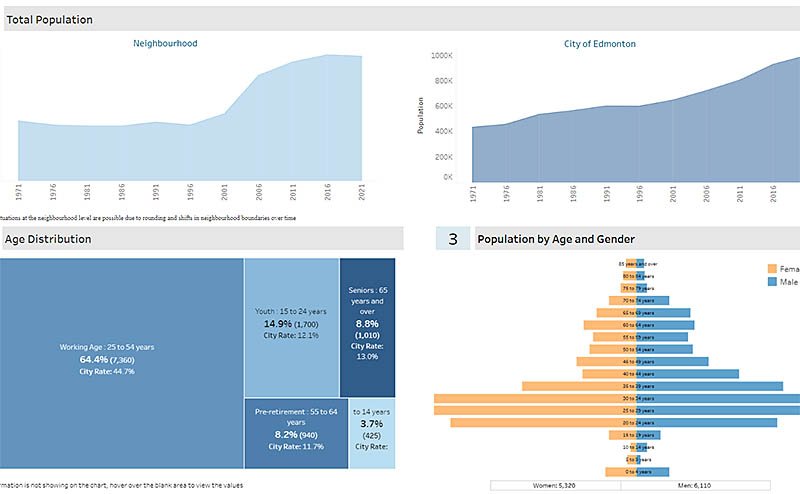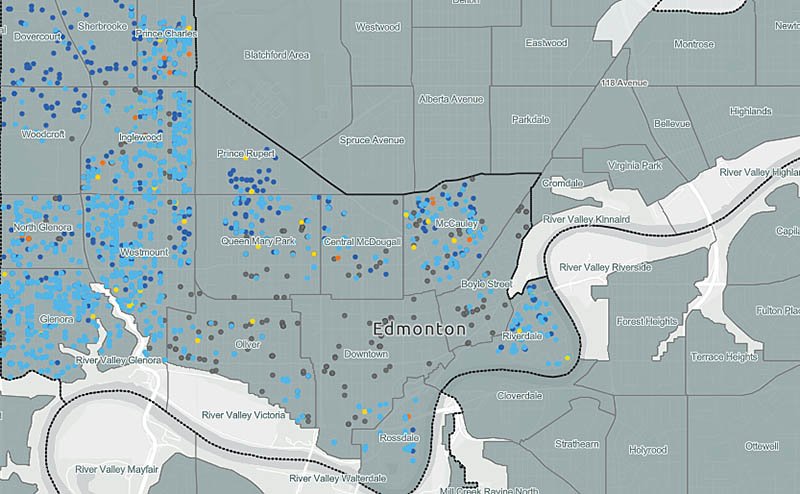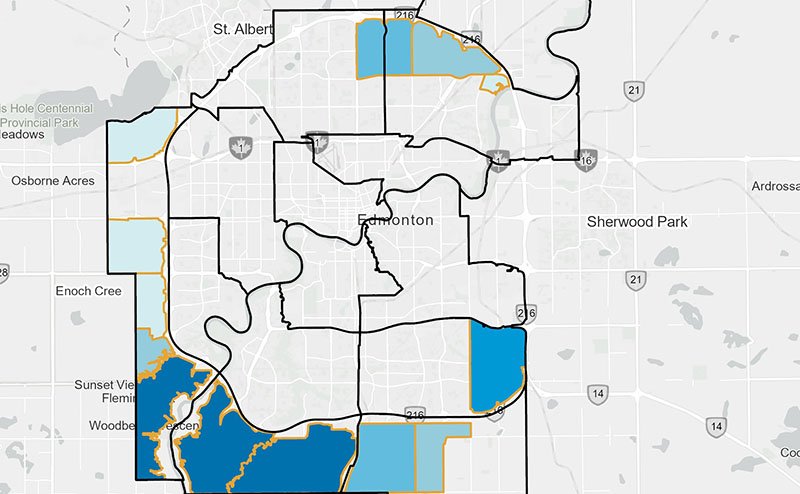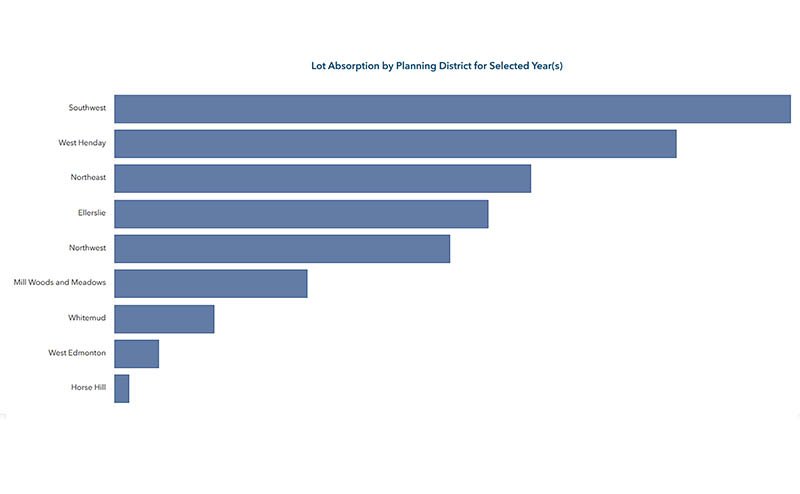Urban growth analyses are conducted by specialized city planners who prepare geospatial research and analytics, including projections, to inform land use, policy and investment decisions.
The work is guided by the priorities of The City Plan’s objectives. It provides important intelligence to city-building partners to make strategic planning decisions, ensuring we all move together in the same direction.
Growth monitoring and analyses are conducted at multiple geographic scales, from city-wide to neighbourhood levels, and also include planning districts, nodes and corridors, and priority growth areas.
Edmonton has a diverse population with an increasing number of new people eager to call our city home. According to the 2021 Federal Census, population growth continues through net migration (the difference between the number of immigrants and emigrants) and natural increases (the difference between the number of births and number of deaths). Edmontonians are invited to explore the 2021 Census data and trends about each neighbourhood in the 2021 Federal Census Neighbourhood Profiles.
Growth Monitoring Reports
The Annual Growth Monitoring Reports provide a check-in on progress made towards The City Plan's land-use vision. The reports summarize urban growth trends through analyses at various geographic scales, from city-wide to neighbourhood levels.
These annual reports monitor progress on The City Plan's goals, allowing Edmontonians and City Council to understand the effects of policies and investments related to land use policy and investments.
Note: before 2021, reports were prepared in accordance with The Way We Grow. Past reports are located in the City of Edmonton's Open Data Portal.
Monitoring Housing Affordability
Administration has published Edmonton’s first annual report on monitoring market housing affordability, including rentals. Future reports may expand the selection of affordability indicators, including household spending on transportation, as data becomes available.
Low-Density Residential Lot Absorption and Supply Report
Low-density residential (LDR) servicing within developing area neighbourhoods by Area Structure Plans (ASPs) and districts.
Low-Density Residential Lot Servicing Report
Low-density residential (LDR) development at the neighbourhood and district levels within the developing area.
Growth Monitoring Overview
Summary of urban growth trends and interactions with other City initiatives
Approved Net New Dwellings Report
Growth patterns of residential dwellings in redeveloping and developing areas
Redeveloping Area Infill Report
Residential units growth through infill within the redeveloping areas
Low-Density Residential Lot Absorption and Supply Report
Low-density residential (LDR) servicing within developing area neighbourhoods by Area Structure Plans (ASPs) and districts
Low-Density Residential Lot Servicing Report
LDR development at neighbourhood and district levels in developing areas
Industrial Land Supply Report
Identifies the amount and distribution of industrial-zoned land available for future development
Net Residential Density Report
Analysis of total net and average annual new-build residential densities in the developing and redeveloping areas
Growth Monitoring Overview
Summary of urban growth trends and interactions with other City initiatives
Approved Net New Dwellings Report
Growth patterns of residential dwellings in redeveloping and developing areas
Redeveloping Area Infill Report
Residential units growth through infill within the redeveloping areas
Low-Density Residential Lot Absorption and Supply Report
Low-density residential (LDR) servicing within developing area neighbourhoods by Area Structure Plans (ASPs) and districts
Low-Density Residential Lot Servicing Report
LDR development at neighbourhood and district levels in developing areas
Redeveloping/Developing Areas Net Residential Density Report
Analysis of net dwellings densities in the developing and redeveloping areas
Industrial Land Supply Report
Identifies the amount and distribution of industrial-zoned land available for future development





